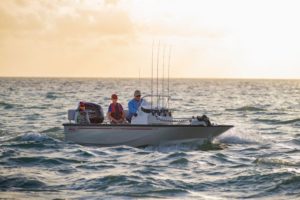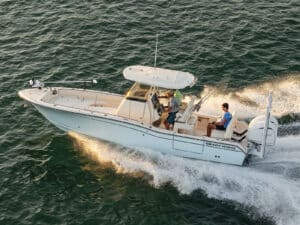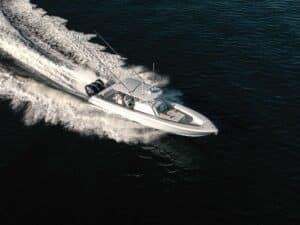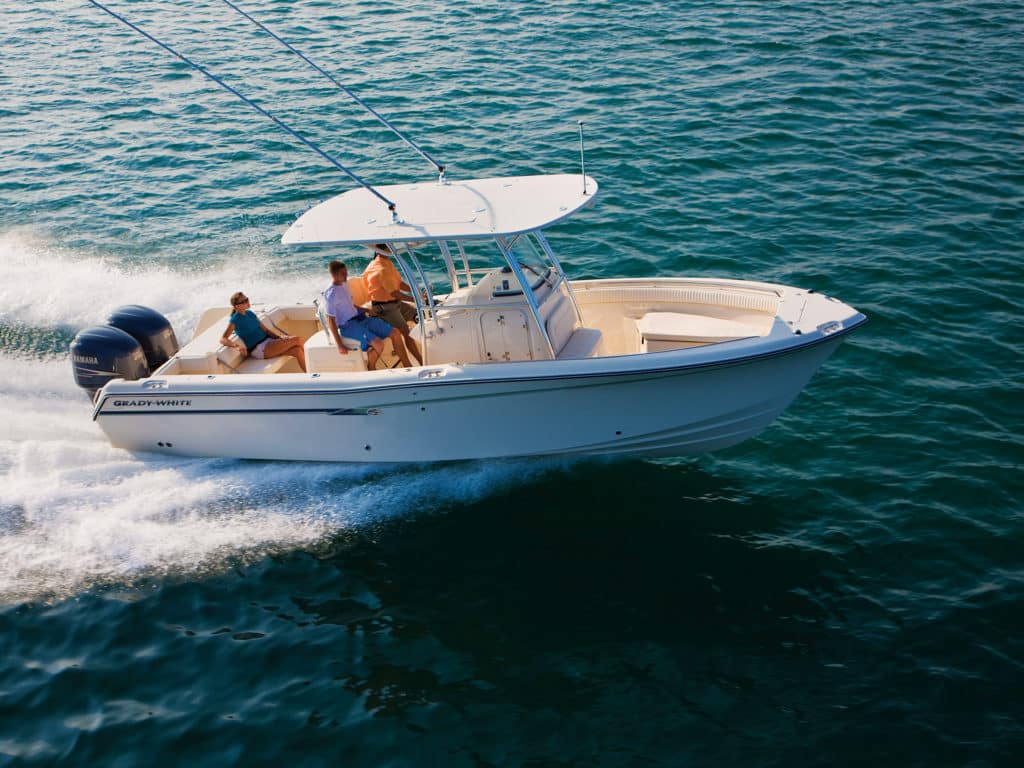
Investing time, energy and yes, money in preparing your boat now for the season ahead can help minimize breakdowns and disruptions later in the year, when fishing activity peaks. Use this 35-point inspection program to help get your boat maintenance up to par.
March represents a special month for boating anglers, a time when many captains — even those in coastal regions free of snow and ice all year — begin preparing their boats, engines and marine systems for the season ahead.
This is a great time to thoroughly examine all of the boat’s systems and equipment, and to repair or replace items that might show excessive wear or corrosion; it’s a regimen that can help you avoid lost fishing time later in the year. As my dear departed grandfather used to say, “Take care of your equipment, and it will take care of you.”
Charter captain Brian Rice echoes those sentiments. Rice fishes the waters of New Jersey aboard his 2006 Contender 31, Jersey Devil, powered by twin Yamaha F250 outboards. He has contributed to the Yamaha Boater’s Log, a blog dedicated to helping you get the most out of your boating experiences.
“Dependability is a two-way street,” Rice observes. “Since I put a significant amount of hours on my outboards each season, I probably replace service items more frequently than a more casual boater needs to. But that’s just me. I hate to let things go that could come back to haunt me during the fishing season.”
Rice employs a boat maintenance checklist when prepping his boat, outboard engines and other systems for the season ahead. It is so comprehensive that I have begun using it myself, and you might find it helpful too.
Here it is, with portions excerpted from the Yamaha Boater’s Log.
Engine and Related Systems
- Replace all engine fluids, oil filters and engine-fuel filters (if not done before winter storage).
- Inspect and clean spark plugs. Replace per the engine-manufacturer maintenance schedule.
- Inspect grease fittings, and replace if necessary; add grease.
- Remove the propellers and check the lower-unit seal.
- Grease the propeller shaft. Replace the cotter pin when reinstalling.
- Remove the lower unit and inspect the water pump. Replace if necessary. (Rice replaces his annually.)
- Inspect the engine zincs and replace as needed.
- Inspect the grounding cable on the outboard bracket, as this can corrode and break. Clean or replace as needed.
- Inspect the battery cable connection to the engine; wire-brush clean and coat with dielectric grease.
- Inspect the power trim and tilt rams and end caps, and service them if needed. Coat them with waterproof grease when you are done.
- Replace all external spin-in fuel-filter canisters.
- Carefully inspect all fuel hoses and primer bulbs for leaks, wear or weathering. This is particularly important with older boats, as ethanol fuel blends can cause a breakdown in pre-ethanol-rated hoses, says Rice.
- Inspect all connections in the fuel-delivery system for any signs of leaks.
- Check the fuel vent and fill tube to the fuel tank to make sure vapor and fuel can flow freely. Rice also suggests using your nose when checking the fuel system. “If you can smell gasoline, investigate the source carefully,” he says. Fix any problems before you use the boat.
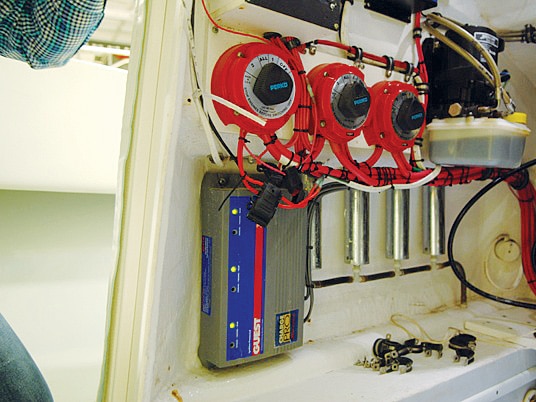
Electrical Systems
- Inspect the batteries. If corrosion is evident, remove and clean the terminals with a solution of baking soda and water. Clean the cable ends and reconnect.
- Check the engine battery cables for internal corrosion by bending sections of each gently. If these feel extraordinarily stiff and crackle inside when you bend them, corrosion has damaged the wires. Replace the cables.
- Load-test all batteries. (Most auto parts stores will do this, but you will have to take the batteries to them for bench testing.) Replace any bad batteries.
- Check the battery switches to be sure they are functional. Older models can wear out.
- Inspect breakers, fuse panels and bus bars for corrosion. Replace any components that show corrosion damage.
- Check all helm switches to be sure they are operational.
- Check all lights. If you have planned to switch over to low-amperage LEDs, now is a good time to do so, especially if a light is no longer operational.
- Check all your marine electronics to be sure they are working correctly. Pay special attention to electrical connections, which are notorious for corrosion.

Steering System
- Non-power-assisted marine hydraulic steering systems have a small fill cap, often accessible on the pump body, but sometimes routed to a port atop the console. The fill for power-assist hydraulic systems is at the pump reservoir. In either case, check the fluid level and top off as needed.
- Inspect all of the hydraulic hoses and connections for leaks. Tighten or replace any components that are leaking.
- Inspect the hydraulic steering ram and end caps, and replace the seals if they are leaking or the caps show excessive corrosion. (Be sure to bleed the system afterward.)
- Grease the fittings on the steering tilt tube, as well as the steering-arm assemblies on cable-steering systems.
Trim Tabs
- Inspect the trim tabs, screws, bolts and rams for wear and corrosion. If you have hydraulic trim tabs, check the cylinders for leaks. If one is leaking, replace them both, as the other is likely to start leaking soon.
- Inspect hydraulic lines, the pump and fluid-reservoir connections to be sure they are free of leaks. Tighten or replace any leaky components. Top off with recommended fluid, if needed.
Vessel Systems
- Inspect all through-hull fittings from the inside and outside to be sure they are secure, undamaged and free of leaks. Tighten, replace and reseal as needed.
- Exercise all through-hull valves to be sure they are working. Replace any frozen valves.
- Inspect all hoses from through-hull fittings. Replace any leaky hoses or corroded hose clamps. If there is room on a hose barb, double-clamp the fitting.
- Check all bilge pumps and automatic switches. Replace any components that don’t work before you go boating.
- Check all other pumps, including fish-box, livewell and washdown pumps. Replace any pumps that leak or don’t work.
- Inspect your anchor rode and replace any components that show excessive wear and tear.
- Inspect the hardtop or T-top frame for cracks, especially around the welds. Have these repaired now, before the cracks grow larger or even break.
In reality, maintaining a boat — particularly one used in salt water — is an ongoing process. However conducting a comprehensive inspection at the start of the season will help minimize disruptions later, when fishing action peaks.

